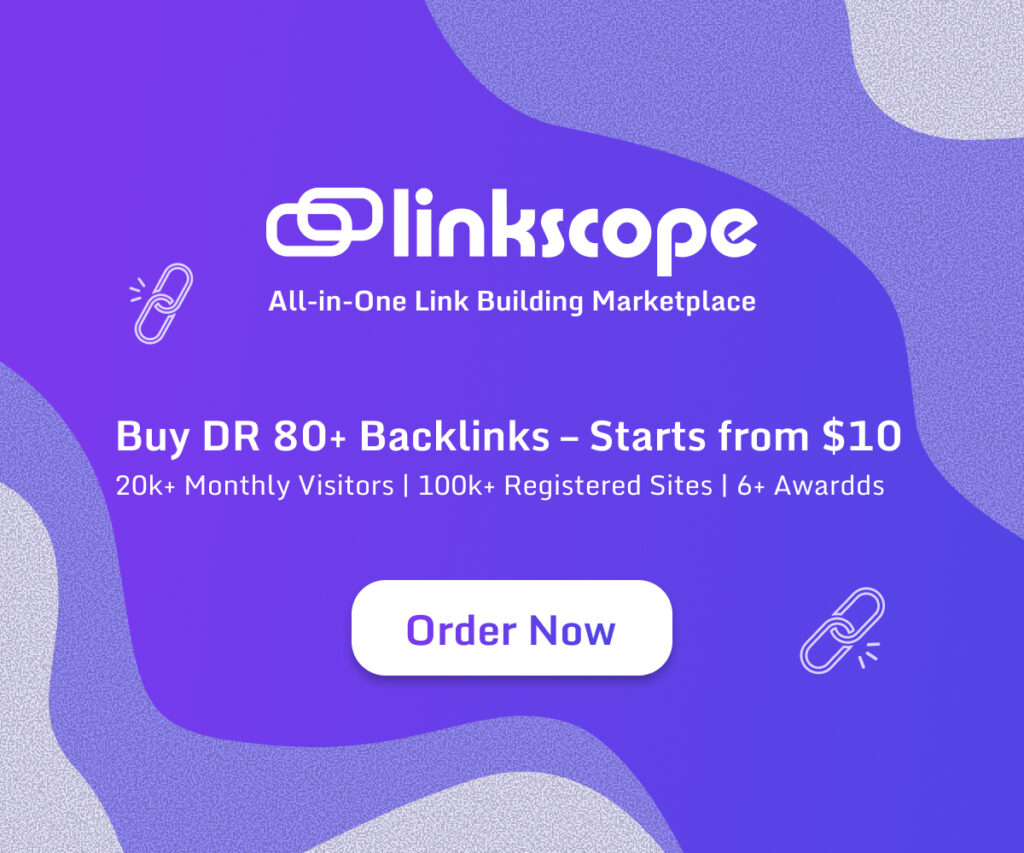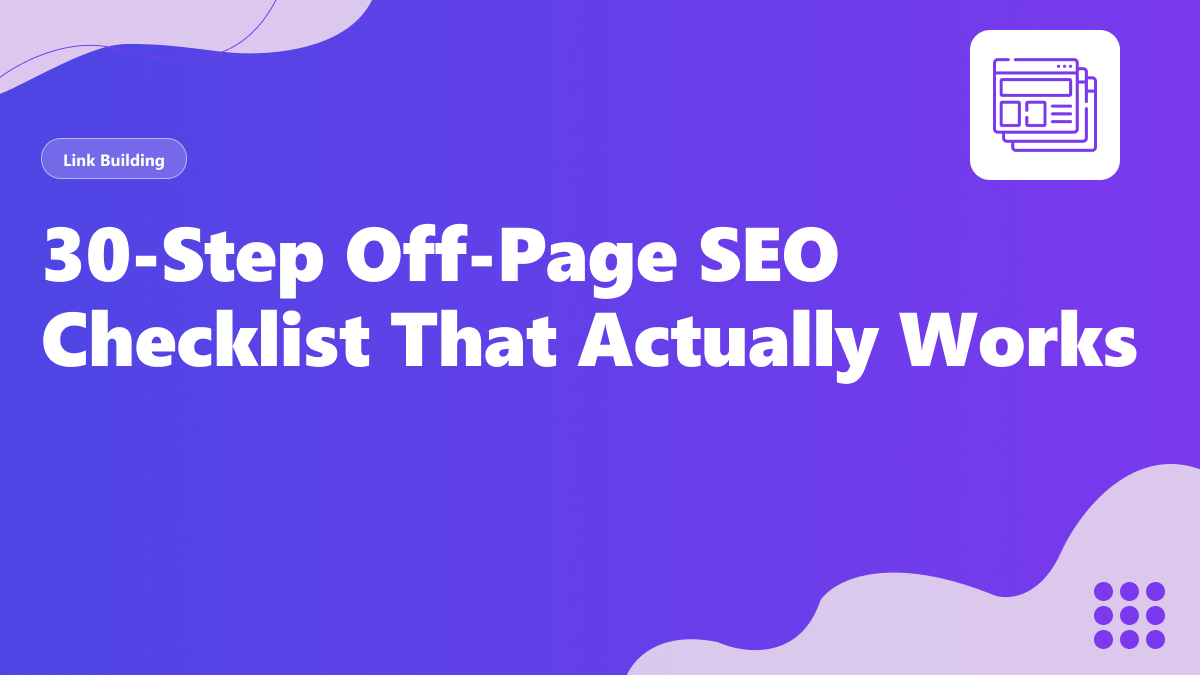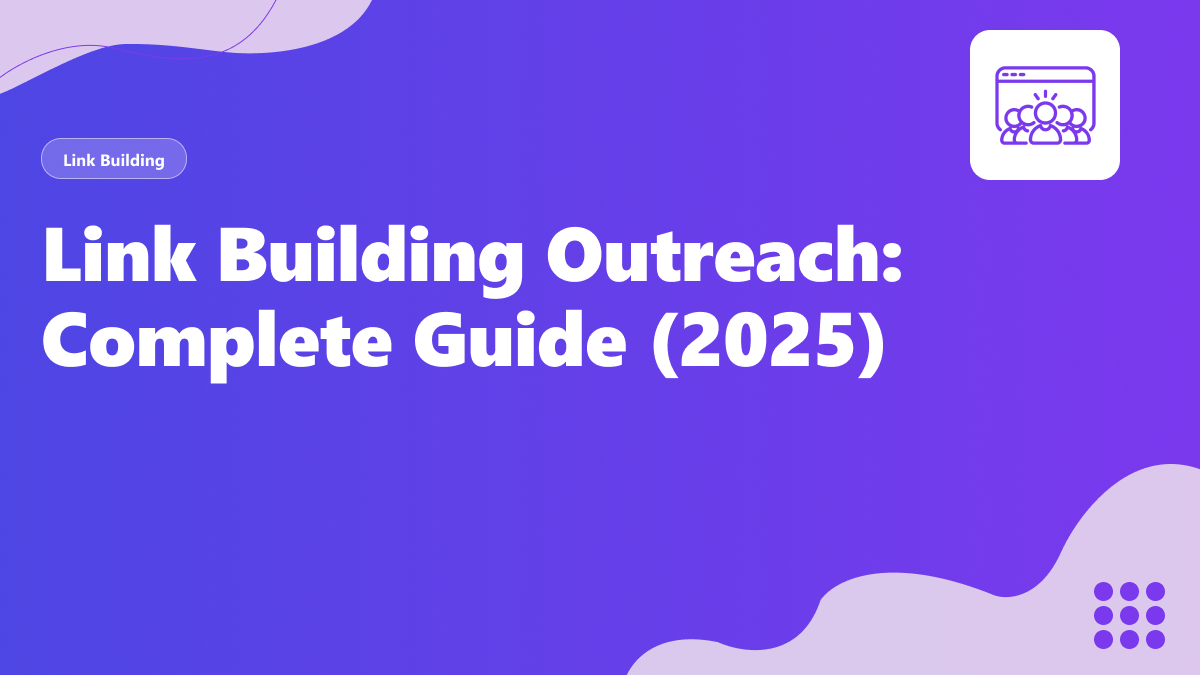Want to build backlinks that actually move the needle? This checklist cuts through the fluff and gives you exactly what you need to do.
Skip the manual work? LinkScope automates most of these steps for you →
Before You Start Building Links
1. Audit Your Current Backlinks
Use Ahrefs or SEMrush to see what backlinks you already have. Export the data and look for patterns.
💡 Pro tip: LinkScope automatically audits your backlinks and flags low-quality ones for you.
2. Remove Spammy Links
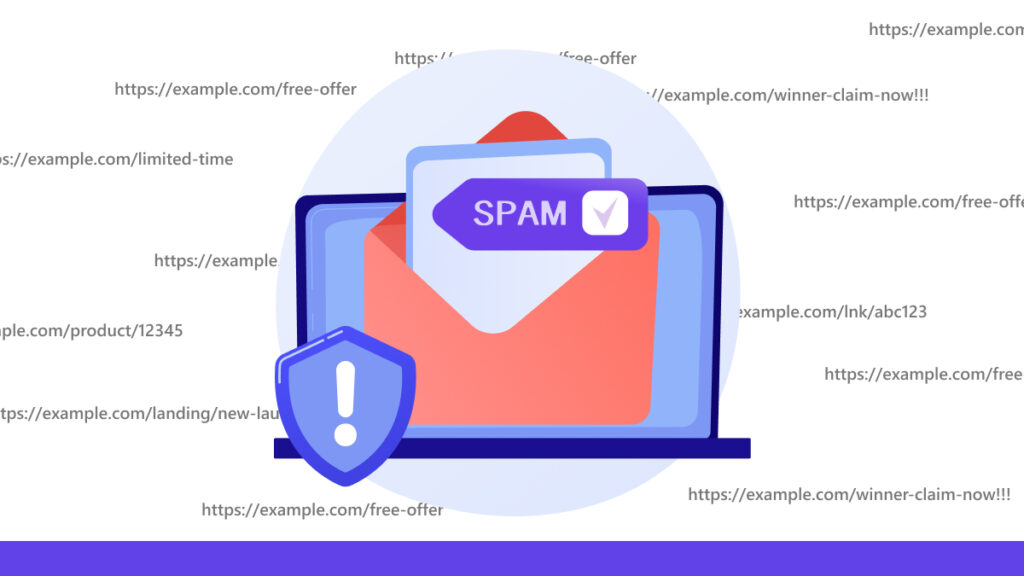
Found low-quality links? Use Google’s Disavow Tool to get rid of them before they hurt your rankings.
3. Check Your Competitors
See what backlinks your competitors have that you don’t. This is your gap analysis.
💡 Pro tip: LinkScope’s competitor analysis shows you the exact links your competitors have, plus their contact info.
4. Fix Your On-Page SEO First
Don’t build links to pages with poor on-page SEO. Fix your title tags, meta descriptions, and content first.
Finding Quality Link Opportunities
5. Check Domain Authority
Only target sites with higher DA than yours. If your site has DA 20, aim for DA 30+ sites.
6. Look at Their Traffic
Use SEMrush to see if the site gets real traffic. No traffic = no value.
7. Check How Many Outbound Links They Have
Fewer outbound links = more link juice for you. Avoid pages with 50+ outbound links.
8. Make Sure It’s Relevant
A backlink from a cooking blog won’t help your SEO agency. Stay in your niche.
9. Verify They’re Not a PBN
Check if multiple sites share the same IP address using Ahrefs’ Batch Analysis tool.
10. Confirm They Give Dofollow Links
Right-click → View Page Source. Look for “rel=nofollow”. If you see it, skip that site.
Link Prospecting Methods
11. Use Google Search Operators
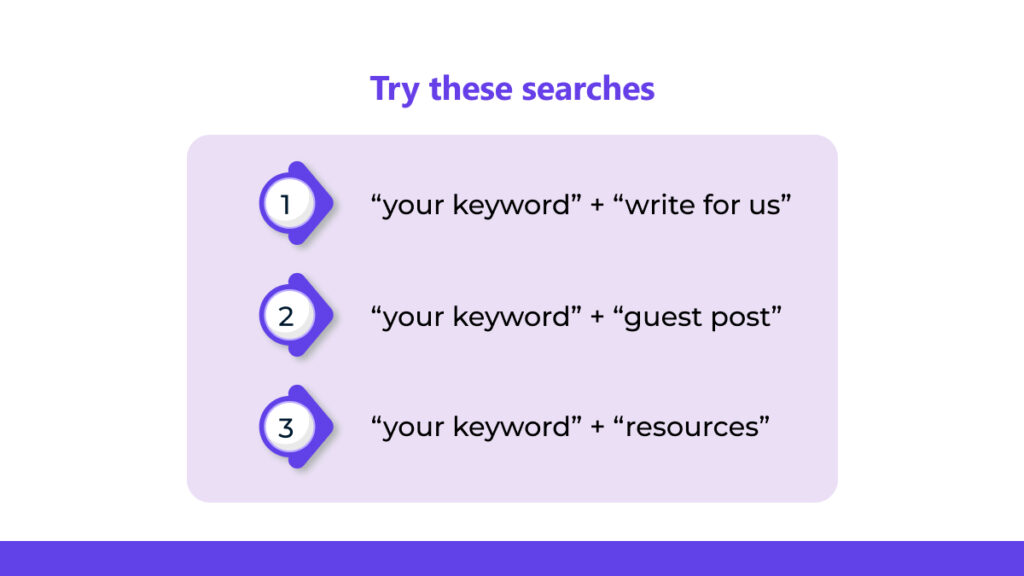
Try these searches:
- “your keyword” + “write for us”
- “your keyword” + “guest post”
- “your keyword” + “resources”
12. Find Broken Links
Use Ahrefs to find broken links on relevant sites. Offer your content as a replacement.
13. Check Industry Directories
Find high-quality directories in your industry. Avoid spammy submission sites.
14. Look for Unlinked Mentions
Use Google Alerts to find mentions of your brand without links. Ask for the link.
Outreach That Gets Results
15. Find the Right Contact
Look for the content manager or editor, not the generic contact email.
💡 Pro tip: LinkScope finds verified email addresses for website owners and editors automatically.
16. Personalize Your Emails
Mention something specific about their site or recent content.
17. Lead with Value
Don’t ask for links in your first email. Offer something useful first.
18. Keep It Short
Your outreach email should be under 150 words.
19. Follow Up (But Don’t Spam)
Send 2-3 follow-ups spaced a week apart. Then move on.
Creating Link-Worthy Content
20. Use the Skyscraper Technique
Find popular content in your niche and create something 10x better.
21. Add Original Data
Include surveys, studies, or original research. People love to cite data.
22. Create Visual Content

Add infographics, charts, and images. Visual content gets shared more.
23. Write for Their Audience
Don’t just repost your existing content. Create something new for their readers.
24. Include Relevant Links
Add 2-3 internal links to their site and 1-2 external links to authority sites.
After You Get the Link
25. Check Your Link is Live
Click on it and make sure it works properly.
26. Verify It’s Indexed
Search “site:theirwebsite.com your-article-title” in Google.
27. Monitor Your Links Monthly
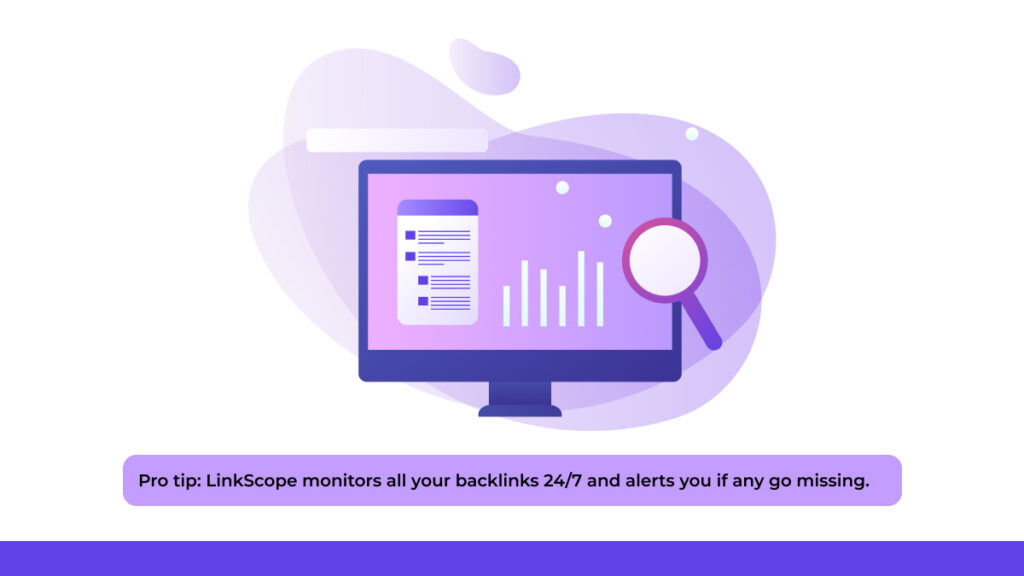
Use a tool like Linkody to track if your links stay live.
💡 Pro tip: LinkScope monitors all your backlinks 24/7 and alerts you if any go missing.
28. Track Your Rankings
See if your target keywords improve after getting new links.
29. Maintain Dofollow/Nofollow Ratio
Aim for 70% dofollow, 30% nofollow links. This looks natural to Google.
30. Build Links to Your Guest Posts
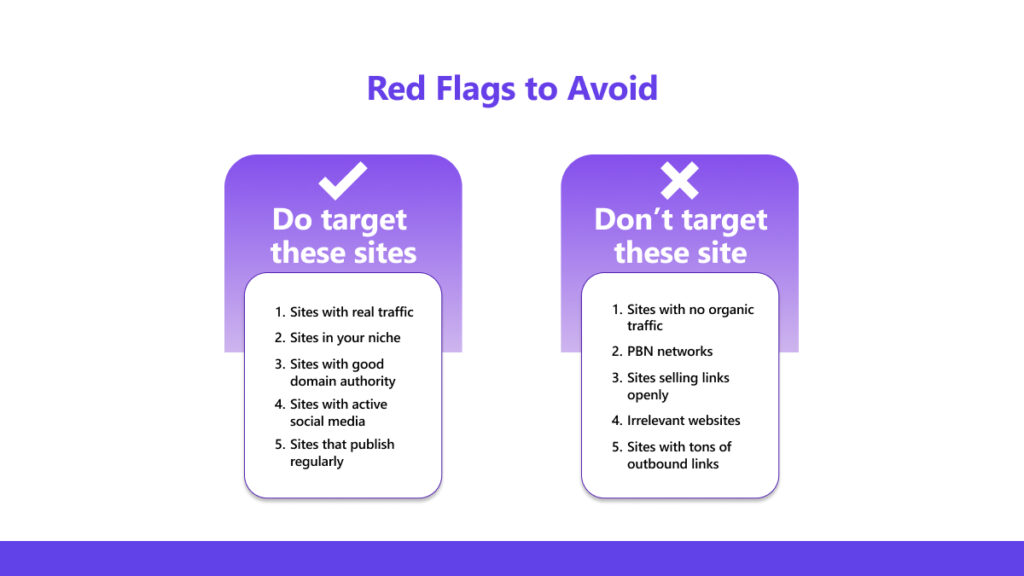
Get a few more links pointing to your guest posts to boost their authority.
Red Flags to Avoid
❌ Don’t target these sites:
- Sites with no organic traffic
- PBN networks
- Sites selling links openly
- Irrelevant websites
- Sites with tons of outbound links
✅ Do target these sites:
- Sites with real traffic
- Sites in your niche
- Sites with good domain authority
- Sites with active social media
- Sites that publish regularly
The Bottom Line
Link building isn’t about getting as many links as possible. It’s about getting the RIGHT links.
Focus on quality over quantity. One link from a high-authority, relevant site is worth more than 100 links from low-quality directories.
Start with steps 1-4 before you do anything else. Then work through the rest of the checklist systematically.
Remember: Good link building takes time. Don’t expect overnight results. But if you follow this checklist, you’ll see your rankings improve over the next 3-6 months.
Ready to Automate Your Link Building?
Following this checklist manually takes weeks. LinkScope does it in hours.
✅ Automated prospect research – Find high-quality link opportunities in your niche
✅ Verified contact details – Get email addresses that actually work
✅ Competitor backlink analysis – See exactly where your competitors get their links
✅ 24/7 link monitoring – Get alerts when your links go missing
✅ Outreach automation – Send personalized emails at scale
Start your free LinkScope trial →
Join 2,000+ agencies and SEOs who use LinkScope to build better backlinks, faster.

